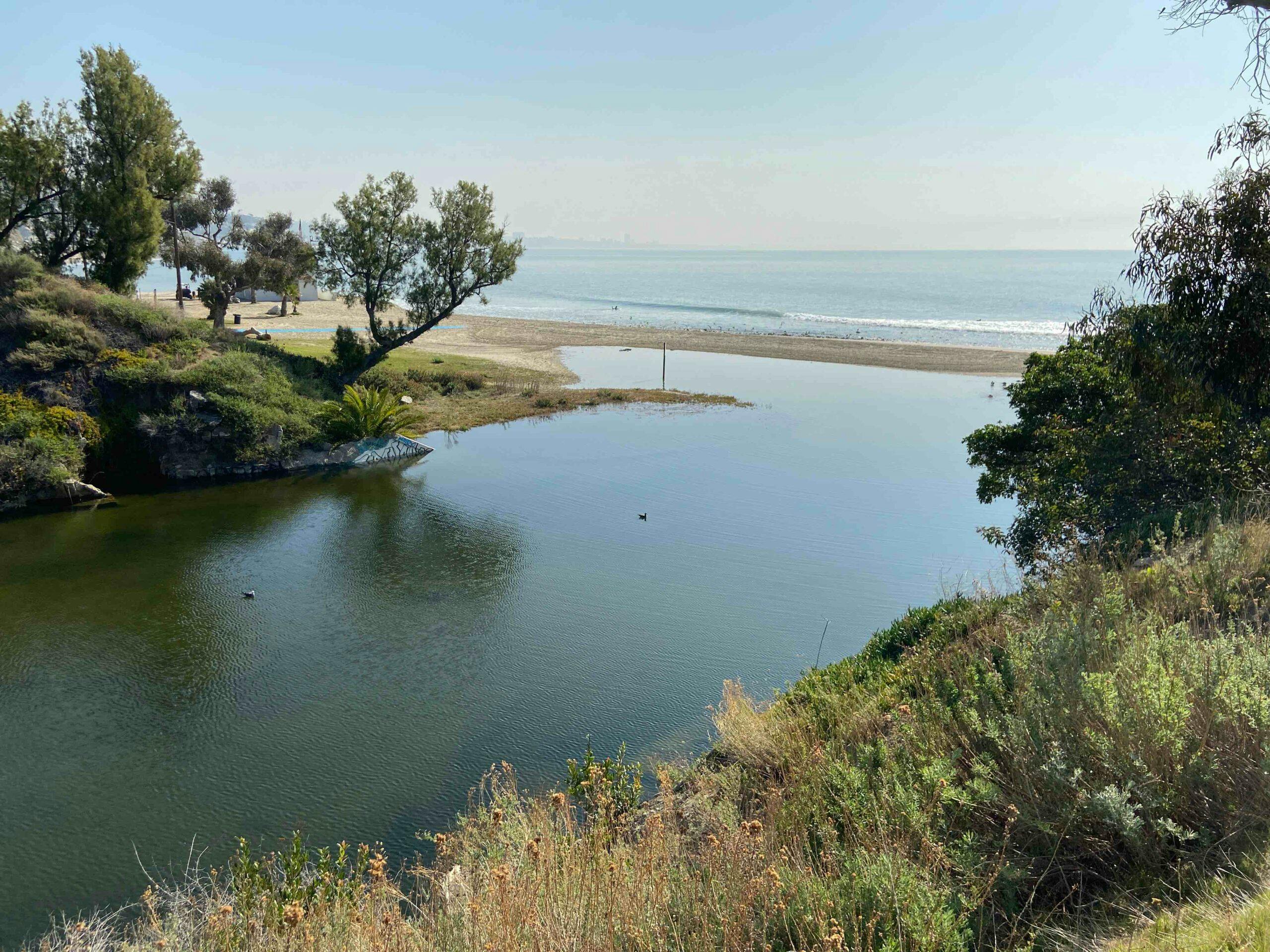
Other Stream and Wetland Projects
Monitoring and informing regional understanding of coastal wetland systems.
Stone Canyon Creek Restoration, Invasive Species Monitoring and Removal, Small-Scale Estuaries and Regional Wetland Monitoring
These projects and programs conducted by The Bay Foundation (TBF), along with our many partners, have helped to restore ecosystems while generating valuable information that supports regional wetland management.
Project Highlights
Regional Wetland Monitoring
Applying standardized monitoring methods across large regions enables scientists to compare sites within that region and to develop a holistic ecological assessment. The Bay Foundation (TBF) has conducted numerous surveys and contributed to these efforts for coastal wetlands in Southern California. One of the primary goals of regional wetland monitoring is to increase our regional understanding of the health of our coastal wetland systems and apply that knowledge to standardizing wetland monitoring across the state of California. Site-intensive wetland monitoring provides important information on ecological function and processes, restoration performance diagnostics and regulatory compliance, and also supports rapid assessments.
Stone Canyon Creek Restoration
TBF and UCLA Lab School (ULS) worked with thousands of volunteers to help restore the ecosystem of the only remaining section of unburied creek on the UCLA campus and one of the last open streams in the area. This restored creek segment serves as a ‘living classroom’ for the school while providing habitat for native species. Ongoing adaptive management helps the native plants resist further invasion. Once established, the native plants help stabilize the stream banks improving downstream water quality.
Invasive Species Monitoring and Removal
Invasive species can prey on native species, reduce water quality, cause problems with creek bed erosion, and compete directly with native southern California species for resources and space. TBF helps to monitor the spread of the invasive New Zealand mudsnails (NZMS) and control the spread of the invasive Louisiana red swamp crayfish.
Non-native Louisiana red swamp crayfish are harmful to the ecosystem of the Santa Monica Mountains. Native amphibians and fish are threatened by the propagation of this species through predation and habitat changes, causing a disturbance to the ecosystem. To date, volunteers working with TBF and Mountains Restoration Trust have removed over 11,000 crayfish from Malibu Creek.
Small-Scale Estuaries
The northern portion of the Santa Monica Bay Watershed has many smaller sub-watersheds that end in small-scale bar-built estuaries that have largely been filled in with sediment from development over time and suffer from impaired water quality, such as Topanga Lagoon, Trancas Lagoon, and Zuma Lagoon. TBF is currently working with partner agencies to explore options to monitor and restore these estuaries to create a network of healthy wetlands throughout the Bay.
Regional Wetland Monitoring
Applying standardized monitoring methods across large regions enables scientists to compare sites within that region and to develop a holistic ecological assessment. The Bay Foundation (TBF) has conducted numerous surveys and contributed to these efforts for coastal wetlands in Southern California. One of the primary goals of regional wetland monitoring is to increase our regional understanding of the health of our coastal wetland systems and apply that knowledge to standardizing wetland monitoring across the state of California. Site-intensive wetland monitoring provides important information on ecological function and processes, restoration performance diagnostics and regulatory compliance, and also supports rapid assessments.
Stone Canyon Creek Restoration
TBF and UCLA Lab School (ULS) worked with thousands of volunteers to help restore the ecosystem of the only remaining section of unburied creek on the UCLA campus and one of the last open streams in the area. This restored creek segment serves as a ‘living classroom’ for the school while providing habitat for native species. Ongoing adaptive management helps the native plants resist further invasion. Once established, the native plants help stabilize the stream banks improving downstream water quality.